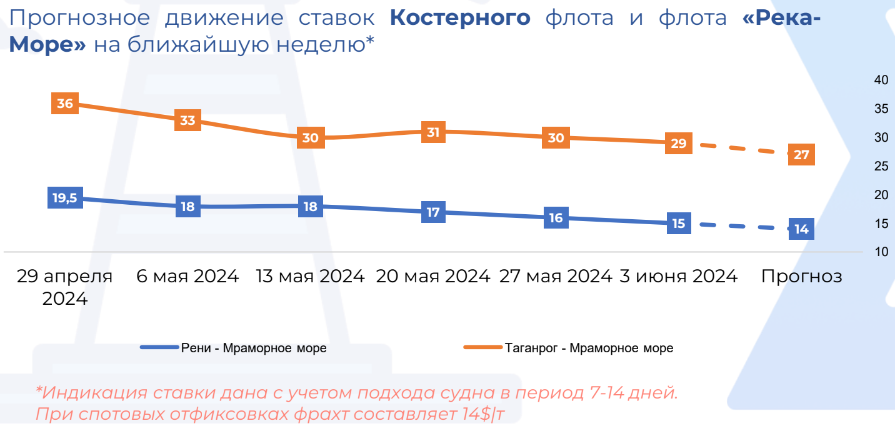One of the key factors affecting freight rates in the Black Sea region is vessel surplus. Virtually every market segment has a long list of surplus vessels, which lowers rates due to high competition for cargo. A special influence on the market is caused by a decrease in demand for grain and coal from Russia. Lack of offers on the spot market aggravates the situation, especially for vessels of 5–6 thousand tons capacity.
High competition for limited cargoes in the neighboring Mediterranean Sea is also putting pressure on freight rates. Shipowners are forced to make further concessions to keep their vessels busy, which leads to a $0.5-2/t per week reduction in rates on key routes. Given current trends, rates can be expected to remain low in the near term.
In the Mediterranean, an excess of available vessels forces shipowners to cut rates to keep their vessels busy. This leads to a $0.5-2/t per week drop in rates on key routes. Low demand for the transportation of cargoes such as coal, grain and construction materials continues to put pressure on freight rates. Rate outlook remains unfavorable: a lack of significant growth in demand for key cargoes and an excess of available vessels will continue to pressure the market. Even with a possible increase in demand for certain types of cargo, the general trend towards lower rates is unlikely to change in the near future.
Freight rates in the Azov Sea are subject to significant fluctuations due to the excess of vessels on the market. This surplus leads to lower rates, as shipowners strive to get at least some utilization. Demand for transportation of cargoes from the region, such as grain and coal, remains low. High level of competition among Ship Owners for limited cargoes leads to necessity of making significant concessions in rates. This is especially noticeable for vessels of 5–6 thousand tons in capacity, where rate reductions reach $2–3/t, while for smaller vessels rates are reduced by $1–2/t. The forecast for freight rates in the Azov Sea remains negative.

 +380 67 625 91 65
+380 67 625 91 65